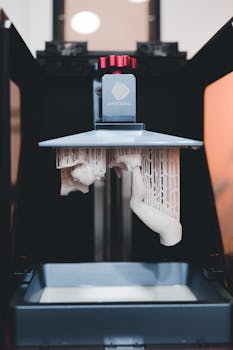The Difference Between 3D and 4D Printing: A Comprehensive Guide
In recent years, additive manufacturing technologies have significantly advanced, leading to the emergence of 3D and 4D printing. While both technologies revolve around creating three-dimensional objects, they differ in their capabilities, materials used, and applications. Let's delve into the intricacies of 3D and 4D printing to understand their differences better.
3D Printing
How It Works
Layer-by-Layer Approach: 3D printing builds objects layer by layer using materials like plastic, metal, or resin.
Computer-Aided Design (CAD): Designs are created using specialized software and then sent to the 3D printer for production.
Variety of Techniques: Fused Deposition Modeling (FDM), Stereolithography (SLA), and Selective Laser Sintering (SLS) are common 3D printing techniques.
Materials
Plastics: ABS, PLA, and PETG are commonly used plastics.
Metals: Aluminum, titanium, and steel can also be used but require specialized equipment.
Applications
Prototyping: Widely used in industries for rapid prototyping of parts and products.
Medical Field: Used for creating custom implants, prosthetics, and dental devices.
Architecture: Architects use 3D printing for creating detailed scale models and prototypes.
4D Printing
How It Differs
Dynamic Self-Assembly: 4D printing involves materials that can self-assemble or transform when exposed to stimuli like water, heat, or light.
Shape-Shifting: Objects printed using 4D technology can change shape or properties after production.
Complexity in Design: Allows for the creation of intricate structures not achievable with traditional 3D printing.
Potential Applications
Adaptive Infrastructure: Self-repairing materials for infrastructure maintenance.
Biomedical Engineering: Shape-shifting implants for tailored medical treatments.
Aerospace: Self-assembling structures for space missions.
Key Differences Between 3D and 4D Printing
Material Behavior: While 3D printing uses static materials, 4D printing involves dynamic materials that can change over time.
Complexity: 4D printing enables the creation of more complex and adaptive structures compared to 3D printing.
Applications: 3D printing is widely used in prototyping and manufacturing, while 4D printing is still at the cutting edge, with potential applications in diverse fields.
In conclusion, both 3D and 4D printing technologies have revolutionized manufacturing and design processes. While 3D printing focuses on static object creation, 4D printing takes it a step further by introducing dynamic and self-adaptive materials, opening up new opportunities for innovation and creativity.
